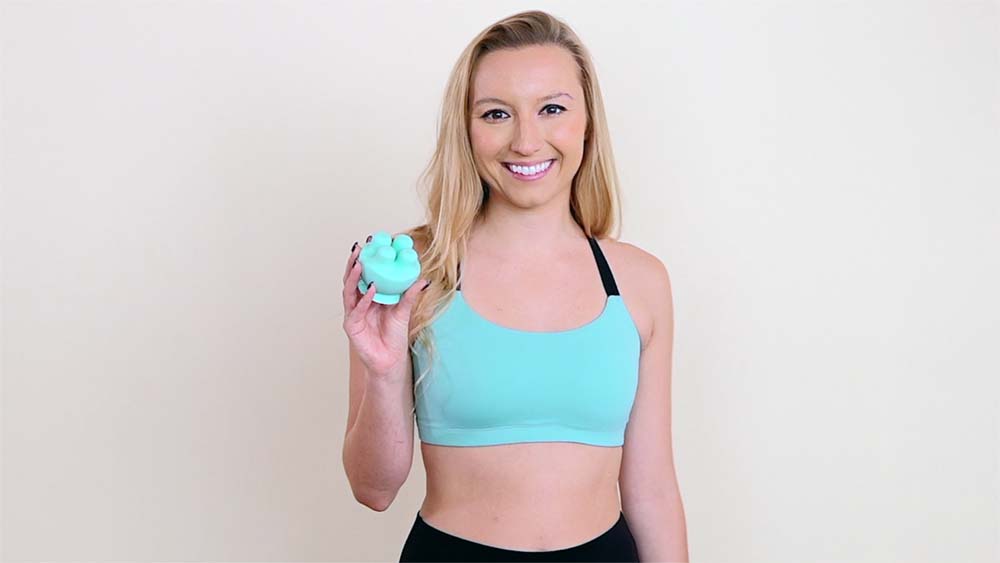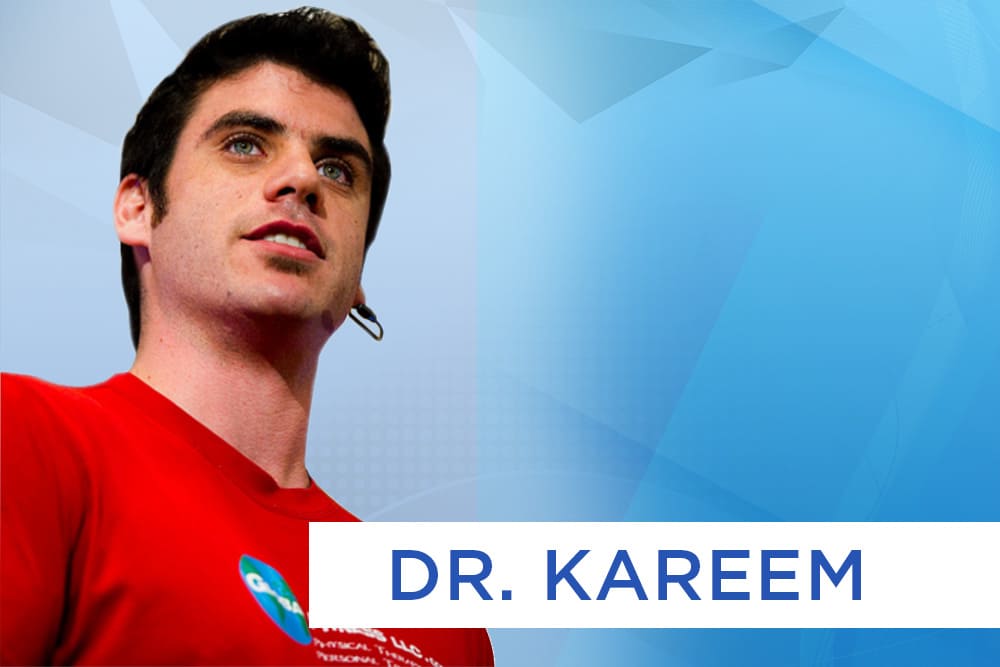Maximizing your fat loss potential comes down to three main factors:
1.) Workout Efficacy
2.) Recovery Periods
3.) Nutritional Strategy
In order to build the most efficacious workout possible, you’ll need to customize the workout to your specific needs. Think about your body type (more endurance or sprinter), what’s worked for you in the past (swimming, weights, etc.), and how much time you have to offer. As closely as possible, design a workout program that will meet your needs. Here are a few examples of workout customizations that are possible based upon answers to the questions above:
Example #1: Endurance-based man who likes to swim but has lost weight before while doing sprinting and lifting weights.
Dr. Kareem’s Recommendations: Mix it up to lose fat. fat loss is about shocking your body, over and over again, until it molds itself into a leaner, more capable version of yourself. Sprinters get leaner, and they get there faster. There’s a reason for this. Short duration, high intensity workouts will serve you perfectly.
Example #2: Endurance-based woman who only has a little bit of time, but has seen success by doing things like cardio or other endurance-based activities that she no longer has time to do. Unfortunately, whenever she’s lifted weights in the past, she’s felt like she was bulking up, rather than trimming down.
Dr. Kareem’s Recommendations: This is a really common, and valid concern. Instead of thinking about endurance-based activities like cardio as opposite from ‘heavy’ lifting, consider the alternative. What about contrasting endurance-based activities from sprint-based activities that use very little or no weight.
When you workout with lighter weights and increase your rep range, whether you do this by time with interval-based training, or by reps, you naturally build more muscle fibers that are specific to muscular endurance. However, when you do this at a very fast pace, or you add sprints, you bias the muscle fibers to the ones that consume sugar, even though you’re not putting on size. Therein lies the answer: Sprint, but stick to lighter weights and higher rep ranges.
Instead of thinking about your workout, or a particular exercise, I’d strongly suggest that you consider the impact of the rest of your day, and your days off. It’s not a matter of burning calories in the gym that will make the difference for you. Instead, it’s a decision to burn fat all the time.
Calories In – Calories Out = Calories For The Day
3500 calories = 1 pound
So, let’s consider two scenarios:
Workout #1: Burn 350 calories in a 30 minute workout, either on a treadmill or doing circuit training, for example.
Workout #2: Burn 300 calories in a 30 minute workout, interval training with weights.
Obviously, Workout #1 wins by 50 calories, right?
Wrong. In point of fact, workout #2 may burn 2-9x more calories than workout #1, although it may take up to 72 hours to finish counting the calories burned. In other words, Workout #2 will temporarily raise your metabolic rate; your body will burn more calories for every day its ‘recovering’ from a workout of this type.
With workout #1, when you leave the gym, you’re done burning calories. With workout #2, you leave the gym and burn even more calories.
Recovery periods are as important as the workouts themselves. Perhaps the most well-spoken on this topic is Tim Ferriss, from the 4 Hour Body. He talks about using the concept of Minimum Effective Dose (MED), taken from pharmacology, and applying it to exercise. This is, in fact, what I’ve been focused on for a long time, but he’s hit the nail on the head in his description.
You see, when you do the proper exercises, and you sequence them properly, your body requires time to heal. This is how torn muscle fibers repair themselves, lactic acid is taken from the muscles and absorbed back into your normal circulation, and your body seeks guidance through nutrition. From a nutritional standpoint, during this healing time, you can do one of four things:
- Increase your caloric intake substantially, often times telling your body you’re ready to build muscle.
- Increase your caloric intake modestly, igniting a fat-burning state in your whole body.
- Maintain your caloric intake, slowly sending your body into starvation mode.
- Lower your caloric intake substantially, ultimately destroying your fat loss potential.
Let’s take it one step further – Nutritional strategy, not just calories.
From a nutritional standpoint, the fastest way to lose fat is to create a raging metabolism. So, it stands to argue we should eat anything that helps us build muscle, affecting our muscle to fat ratio (muscle:fat), or that signals our bodies to speed up. With the simplest logic, we need to consider what the human body was made for. Our bodies were designed to be able to eat animals in the wild, leaves from the wildlife around, fruits and vegetables, and possibly beans/sprouts.
If we were to just eliminate everything else besides the list you see above, we’d lean out instantly. Fat would melt away, and our bodies would prepare themselves for intense physical activity. For a lot of people, this just seems like too much… or too much to ask. I get it… there are A LOT of temptations out there, and I fall victim to them just as quickly and easily as you fall.
It’s a constant struggle, or it’s something you can see from another angle. Several years ago, I learned to view my food as an energy source, and I totally shifted my nutritional strategy. Instead of seeing food as a reward, I began to view food as a chance to feel great. This totally changed my perspective.
Now, when I choose a food that’s not so good for me, I see the energy crash to come. Sure, it takes away a small amount of the pleasure, but not really that much. When I don’t care about my energy level, and I’m feeling like eating pizza or Skittles or something else, I go for it.
On the other hand, when it makes more sense to second guess myself, this perspective makes all the difference.
The take home for this is that I’d like you to shift your focus with food. Consider it’s effect on you, and you may just find yourself choosing other foods. Then, make sure to give yourself regular breaks, or cheat days, where you can be human and fall victim to your temptations. If this happens, look at it as a cheat day, rather than a lack of self-discipline. You’ll be much happier.
From an exercise perspective, consider what’s going to have the greatest effect with the least amount of time. Do what your body is not used to, and watch your results explode. Decide you’re going to rest in between workouts, and make sure you do. Shock your body every time, and then let it rest.
Your body can and will morph. It’s about consistent, and strategic effort.
I love your comments on the blog – they give true life to the topic. Please just maintain Respect and Relevancy. Also, keep in mind: SPAM, business names and irrelevant links will be deleted. Ok, cool – now join the conversation!







